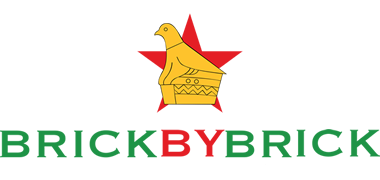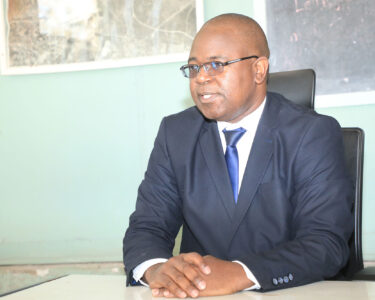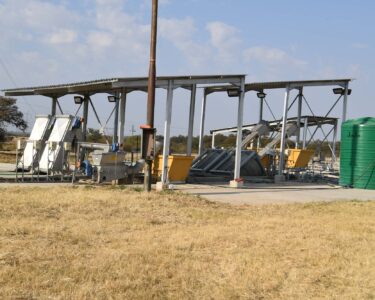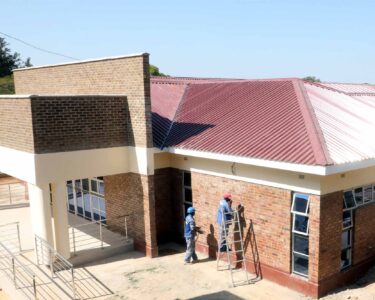Loretta Rumbidzai Dube, the District Development Coordinator (DDC) for Rushinga District, located in the northeast of the Mashonaland Central Province, says devolution funds have put Rushinga in a better place. “Devolution has also made our local authorities visible and even the central government itself visible to the people, because people can now point to the projects and say we benefited from such and such which came from government funds”. She spoke to Brick by Brick in the company of her Assistant DDC, Godwin Chitunduma.
Q: What has the Second Republic done for Rushinga District? Give us an overview.
A: The Rushinga District has a population of 76,880, according to the recent census. It covers 2,359.3 square kilometers. Under the Second Republic, we have been mainly focusing on social amenity projects, and the construction of health posts. So we have done health posts and clinics, classroom blocks, and F14 houses attached to the clinics and schools.
We have also done some police bases, because one of the challenges we have faced is that the places that are far from the centre have no access to security. So we have built police bases.
We also sat as a community and agreed that we would have either a clinic or a health post in each and every ward. We have 25 wards which are purely communal, and one urban ward (Ward 24) that covers mainly our headquarters here.
We share borders with Mudzi, Mount Darwin, and Mozambique, though we don’t have an official border post. We go to Mozambique through Mukumbula, and our future plans are to have a border post at Mukumbula because most of our people here, when they want to do farming, they go to Mozambique. And most of the Mozambicans along the border cross over to our side when they want to access health and school services. Our people go to farm in Mozambique because they have better lands there, here it’s kind of rocky. Through intermarriages, there are now relatives on both sides of the border.
In terms of projects, we have the Bopoma and Chomutukutu clinics at 100% completion. Then we have various health posts at different stages of completion, I would put them at 60% to 80% completion. We have Nyamhehwe, Nyabawa, Mubvundudzi, Gwangwava, Katoni, Kasika Chitange, Mukuhununu, Chongoma, Musvaire, and Nyatsato. These are health posts.
We also have secondary school blocks, about three or four of them, complete. We also have F14 houses for teachers and health staff for the eight clinics that we are constructing. Most of the houses are at 80% and 90% complete.

speaks, to Brick by Brick, with her Assistant DDC, Godwin Chitunduma, giving her support
Q: Can you talk about the relevance of the Semwa Dam to your district?
A: The Semwa Dam, being constructed on the Ruya river, is projected to irrigate about 12,000 hectares along the border between the Rushinga District and Mt Darwin District. We are hoping to maximise on the benefits since it is going to be a dam that is almost as big as the Kariba Dam. We anticipate that it will help us change from a rural district to a town council because we are expecting residential stands, tourism, and recreational activities there.
It is also going to help our water situation because water is one of our biggest challenges here in Rushinga District, mainly because we have a very low water table. When we drill boreholes, we sometimes have to go as deep as 100 to 120 metres.
So we have been advocating for a piped water system in the areas where water is found as there is no need to drill everywhere looking for water when it is proved beyond reasonable doubt that there is no water in those areas. So we would rather congest boreholes in one place so that we extend pipes to the non-water areas.
Most of our communities have benefited from that system, and it’s working. It has made fetching water easy, because people no longer use the bush pumps but taps. Even in Ward 1, in Mukosa, 120 km from here, people are taking water from the taps.
People were walking distances of 10-15 km to access health services, so a lot of home deliveries of babies were still being done. But with the coming in of the new clinics, we have seen that the rate of infant mortality has gone down.
People are now able to access health services at a shorter distance, though we have realised that in as much as we recorded the projects to be 100% complete, we still need to construct mothers’ shelters since most of our clients are pregnant women and most of them would want to come and stay as they come from far distances. Remember we are not talking about Zimbabweans only, but in places like Chomutukutu, we are talking about Mozambicans who cross the border to access health services on our side.
The beauty of these projects is that they are homegrown. They are the projects that the people submitted through their ward assemblies. And in terms of ownership, we are agreed that each community should mobilise local resources, which means the bricks, stones, river sand, etc, and then the devolution funds chip in to buy things that are not locally found, like cement, furniture, roofing and everything else.
Q: So how much has devolution helped the district?
A: Devolution has helped quite a lot because without devolution we wouldn’t have been able to construct all these things, considering how many clinics we now have.
Devolution has also made our local authorities visible and even the central government itself visible to the people, because people can now point to the projects and say we benefited from such and such which came from government funds.
This was very difficult to achieve in the past, because looking at the Rushinga District, we don’t have many major industrial players. Our district is predominantly communal where we don’t have big farmers, so in terms of investment from the local people, we were at a lower level. But devolution funds have put us in a better place.
Q: You spoke about water challenges, what else is hampering progress here?
A: Communication network. We have certain areas like Mukosa where there is no network and people have to go to a certain place to access network. The lack of network has affected us in terms of having teachers in our schools and nurses in our clinics.
It is a big problem. When professionals like teachers, nurses and others come here and see that there is no network, they want to transfer. So if we can have some interventions in that area, it would really help because network is really a challenge in this district. We have actually written to Econet, NetOne, and TelCel, asking them to install booster stations in strategic areas, but we are still waiting to see action from them.
CAPTIONS
Pic 1:
Loretta Rumbidzai Dube, the District Development Coordinator (DDC) for Rushinga District speaks, to Brick by Brick, with her Assistant DDC, Godwin Chitunduma, giving her support
Pic 2:
Loretta Rumbidzai Dube: “The lack of communication network in the Rushinga District has affected us in terms of having teachers in our schools and nurses in our clinics”





